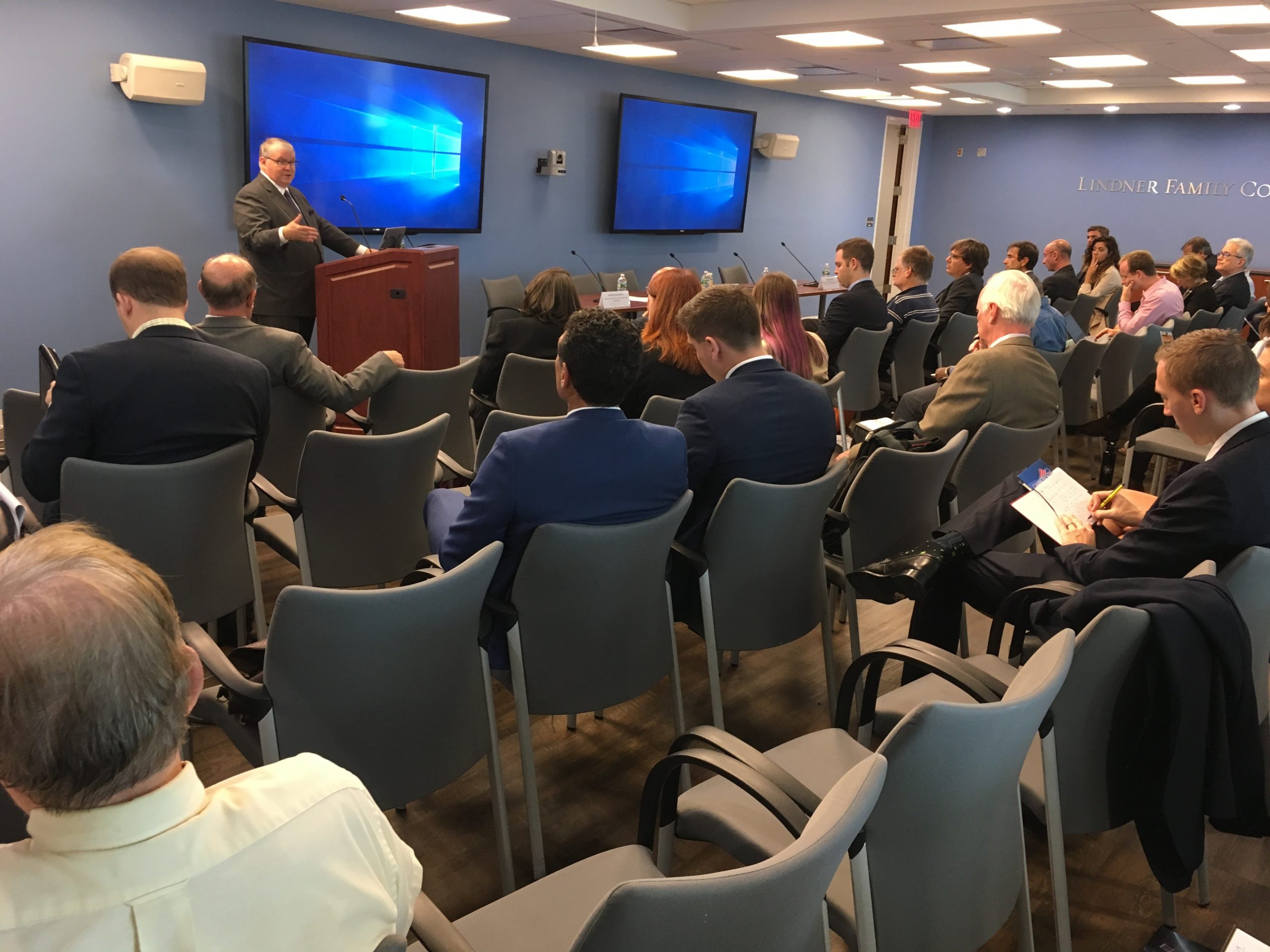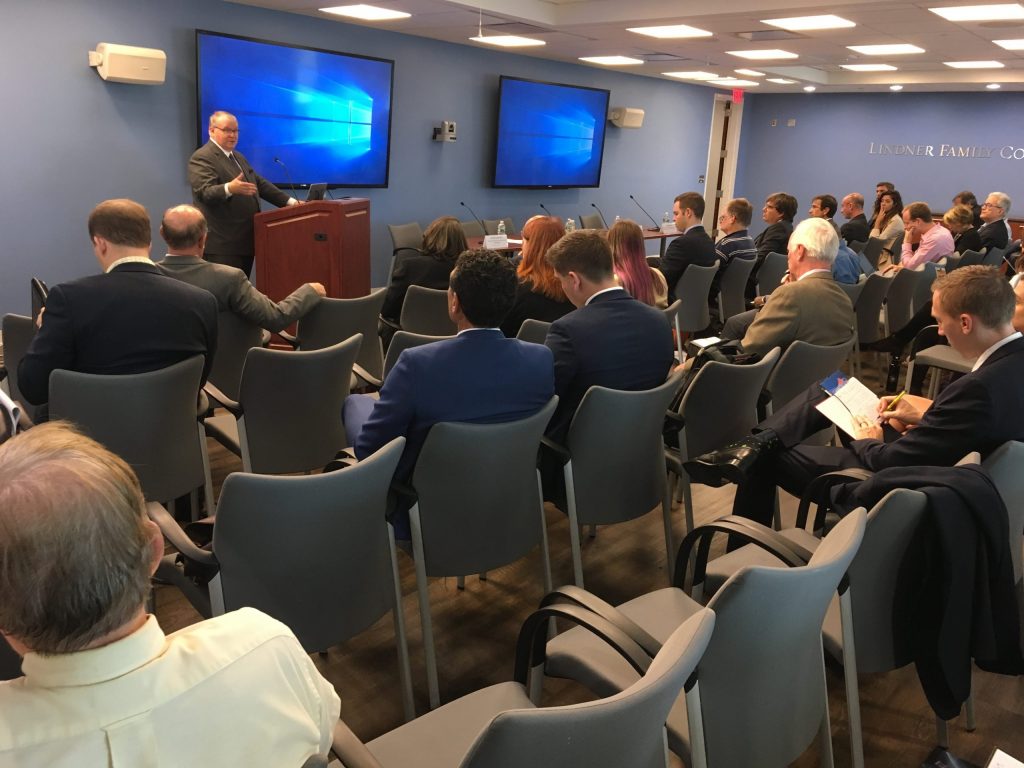O’Connell Remarks from Space Economy Workshop


On September 5, OSC Director Kevin O’Connell delivered the keynote address at a workshop on “Exploring the Hidden Economic Value of Space Applications” hosted by SDA Bocconi School of Management-SEE Lab, the Secure World Foundation, and the GWU Space Policy Institute. Below are his remarks as prepared for delivery.
Remarks of Kevin M. O’Connell
Director, Office of Space Commerce
Good afternoon, everyone. Thank you, Henry, for that kind introduction. Let me also thank the Bocconi School, Secure World Foundation, and GWU’s Space Policy Institute. Henry had a little difficulty pinning me down for today’s session, given a busy week, but he also knew that this topic of improving our understanding of the space economy is one of my personal favorites. And one that I think is very important.
Improving our understanding of the global space economy is one of the four portfolio areas that we have undertaken in the Office of Space Commerce, along with industry advocacy, industry engagement, and the portfolio of deregulatory activities tasked to the Department of Commerce under Space Policy Directives 2 and 3. Over the next few weeks, we’ll be talking more about our approach on commercial remote sensing regulations and on our roadmap for the transition of space situational awareness on behalf of commercial operators worldwide. But those are for another time.
We are at a very exciting time for the space economy. Projections of the global space economy over the next two decades range between $1-3 trillion dollars, with commercial activities representing the lion’s share of those activities. To the point of this workshop, there’s rightly an active discussion about these numbers, what key assumptions are, possible risks to the space economy, and other aspects. That’s a healthy discussion, and ones we need to have. Any and all serious scholarship that helps us characterize and quantify aspects of the global space economy is welcome!
Let’s get started. Before we focus on the “hidden value” of space applications, something that by definition is harder to quantify, let’s take stock of some of the not-so-hidden aspects:
- The most obvious is weather. As we watch real time developments with Hurricane Dorian, we take stock of continuing improvements — both in space and on the ground, both government and commercial — that are providing advance warning about severe weather to decision-makers in way that helps minimize property damage and save lives. A 2017 National Weather Service study highlighted the rapid growth of billion-dollar weather events over the past decade, and estimated that 3-6 percent of variability in US gross domestic product (GDP) can be attributed to weather.
- GPS: a few weeks ago, NIST Director Dr. Walt Copan and I introduced a study by RTI on the economic impact of GPS since commercialization — $1.4 trillion dollars across ten economic sectors — as well as the potential economic losses — approximately $1B per day — that could arise should GPS be damaged in some way.
- Space Debris: while there are many different aspects to the growing space debris challenge, both commercial firms and academics are starting to consider the current and future economic impacts of space debris. This is important in a world where we are only tracking a small fraction of the debris, and space is becoming more congested. The space debris challenge is bound to grow more complex as innovative new space missions emerge.
These are just a few illustrations of efforts designed to characterize and quantify the space economy, but more efforts and discussions like these are needed. I’m planning to host a near-term meeting at Commerce with think tanks, industry analysts, academics, and others to discuss new analytic methods that apply to this area. A larger effort that we have started and is a part of our 2020 plans is to work with the Department’s Bureau of Economic Analysis to develop a “satellite account” designed to more effectively capture space economic activity.
- Among the current challenges are the lack of rigorous definitions, a traditional focus on the capture of “aerospace” data (where the space data is hard to segment out), the incomplete capture of space activities in the North American Industry Classification System (NAICS) rapidly changing shift from products to services in the space business. (Products like satellites and rockets are still very important, but only part of the story).
So why is it important to continue to try and capture this “hidden value” in and of the space economy? Let me name just a few:
- It potentially helps us understand the factors related to successful entrepreneurship in this sector. We need to understand the nature of the entrepreneurial ecosystem, the role of government and private sector investment, how they are changing, the unique challenges of early stage companies, the role of standards and best practices, and other issues.
- It helps inform the broader investment and insurance ecosystem, which is unique in the United States and can vary wildly from country to country. Improved data capture and market information often creates new opportunities and buy-in from other sectors of the economy. (We are seeing some of this in the remote sensing sector, as market verticals like agriculture, insurance, and others are uniquely pursued by vendors). It also helps improve investment decisions by state and local governments. In the United States, this is going to inform developments that will allow every state to understand its potential role in the growing space economy.
- It helps inform and shape regulatory thinking. Our improved understanding of the space economy and different market segments can help identify market failures, speed up regulatory considerations as new space products and services come to market, and provides insight into the value chains associated with different space outcomes (e.g. mitigating space debris, achieving sustainable presence on the Moon). As just one example, think about the potential value of rendezvous and proximity operations, both per se and as a possible enabler of new satellite servicing and debris removal activities. If we can work through key regulatory and international issues, we will be able to change entirely the economics of access and presence in space.
- It helps drive workforce development. The trillion-dollar space economy requires a wide range of talent beyond technical talent (which will remain absolutely necessary). We need to encourage a new generation to take on the many different fields that will inform and benefit from space commerce in the future.
Given those benefits, this is why we have to keep working at it. What kinds of economic benefit and productivity is space actually generating?
- Definitions — including what constitutes “commercial” in both national and international context — are key, as will be be new methodologies and business cases. How we define industries is central to how we measure their progress.
- We need to account for the fact that space is split into traditional industry segments (e.g., manufacturing, launch), and down-stream services segments (e.g., GPS-enabled services, communications and internet, entertainment). These latter segments need more fidelity in accounting for value.
- Where does the line end between space-based services and the platforms they ride on? Where do we draw those lines?
As space commerce grows, we need to match it with rigorous and analytic understanding of the foundations and trends in the space economy. In some ways, the global space economy is becoming a “normal” market, while other aspects remain highly unique. Speaking on behalf of the Office of Space Commerce, we welcome any and all increased analytic focus in this area.
I will look forward to hearing about your deliberations this afternoon. Thank you.